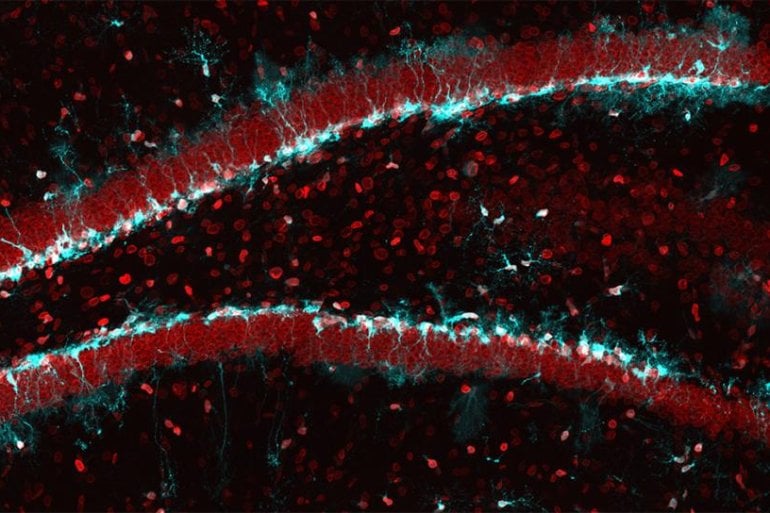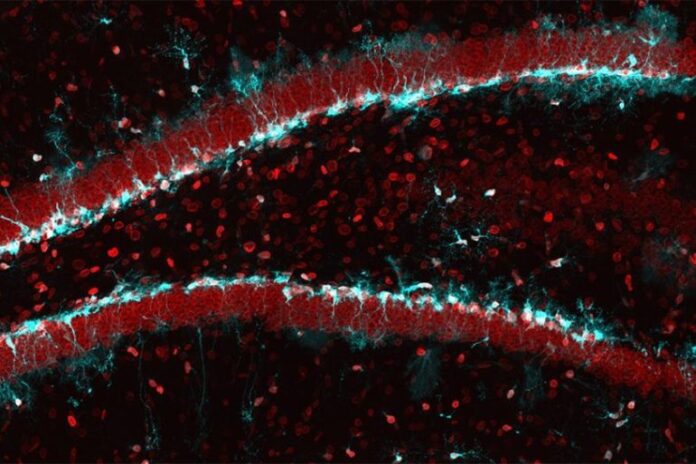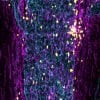[ad_1]
Summary: Increasing lamin B1 levels in aging mice resulted in neural stem cell division and an increase in the number of new neurons.
Source: University of Zurich
The stem cells in our brain generate new neurons throughout life, for example in the hippocampus. This region of the brain plays a key role for a range of memory processes. With increasing age, and in patients suffering from Alzheimer’s disease, the hippocampus’ ability to create new neurons declines steadily – and with it, its memory functions.
Distribution of age-dependent cell damage
A study conducted by the research group of Sebastian Jessberger, a professor at the Brain Research Institute of the University of Zurich, shows how the formation of new neurons is impaired with advancing age. Protein structures in the nuclei of neural stem cells make sure that harmful proteins accumulating over time are unevenly distributed onto the two daughter cells during cell division.
This seems to be an important part of the cells’ ability to proliferate over a long time in order to maintain the supply of neurons. With advancing age, however, the amounts of nucleic proteins change, resulting in defective distribution of harmful proteins between the two daughter cells. This results in a decrease in the numbers of newly generated neurons in the brains of older mice.
The central element in this process is a nuclear protein called lamin B1, the levels of which decrease as people age. When the researchers increased lamin B1 levels in experiments in aging mice, stem cell division improved and the number of new neurons grew.

“As we get older, stem cells throughout the body gradually lose their ability to proliferate. Using genetic engineering and cutting-edge microscope technology, we were able to identify a mechanism that is associated with this process,” says doctoral candidate and first author Khadeesh bin Imtiaz.
Halting the aging process of stem cells
The research is part of several ongoing projects aiming to reactivate aging stem cells. The ability to regenerate damaged tissue generally declines with age, thus affecting almost all types of stem cells in the body. “While our study was limited to brain stem cells, similar mechanisms are likely to play a key role when it comes to the aging process of other stem cells,” says Sebastian Jessberger.
These latest findings are an important step towards exploring age-dependent changes in the behavior of stem cells. “We now know that we can reactivate aging stem cells in the brain. Our hope is that these findings will one day help increase levels of neurogenesis, for example in older people or those suffering from degenerative diseases such as Alzheimer’s. Even if this may still be many years in the future,” says Jessberger.
About this neuroscience research news
Source: University of Zurich
Contact: Sebastian Jessberger – University of Zurich
Image: The image is credited to Khadeesh bin Imtiaz, University of Zurich
Original Research: Closed access.
“Declining lamin B1 expression mediates age-dependent decreases of hippocampal stem cell activity” by Sebastian Jessberger et al. Cell Stem Cell
Abstract
Declining lamin B1 expression mediates age-dependent decreases of hippocampal stem cell activity
Neural stem cells (NSCs) generate neurons throughout life in the hippocampal dentate gyrus. With advancing age, levels of neurogenesis sharply drop, which has been associated with a decline in hippocampal memory function. However, cell-intrinsic mechanisms mediating age-related changes in NSC activity remain largely unknown.
Here, we show that the nuclear lamina protein laminB1 (LB1) is downregulated with age in mouse hippocampal NSCs, whereas protein levels of SUN-domain containing protein 1 (SUN1), previously implicated in Hutchinson-Gilford progeria syndrome (HGPS), increase. Balancing the levels of LB1 and SUN1 in aged NSCs restores the strength of the endoplasmic reticulum diffusion barrier that is associated with segregation of aging factors in proliferating NSCs. Virus-based restoration of LB1 expression in aged NSCs enhances stem cell activity in vitro and increases progenitor cell proliferation and neurogenesis in vivo.
Thus, we here identify a mechanism that mediates age-related decline of neurogenesis in the mammalian hippocampus.
[ad_2]
Source link













